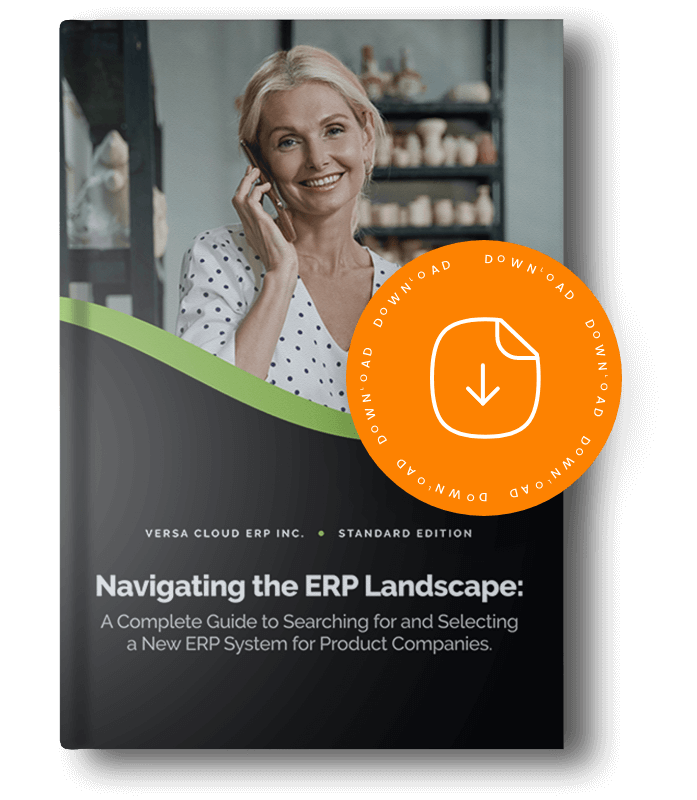For small and medium-sized businesses (SMBs), inventory management is more than numbers; it is one of the elements of overall business health. Imagine that products are just sitting on the shelf, using cash, using space, while customer demand is shifting quickly and the marketplace is moving fast. This is where inventory turnover really becomes valuable.
Inventory turnover indicates how many times inventory was sold (or used) and replaced in a given period of time. An ideal inventory turnover rate is an indication of how well your inventory is being managed and to some extent, how well you’re selling. It can be difficult task for SMBs to manage both of those challenges and not have very expensive tools and teams to help track inventory very closely.
Enterprise Resource Planning (ERP) systems have emerged as viable solutions for simplifying strategy, use and measure prospective inventory modeling and actions. By doing so, SMBs can use the right analytics to have the right choices and respond to demands from the market and customers more readily. We will look at the value of inventory turnover for small businesses, why is it important, and how ERP solutions, when deployed strategically, can be a great advantage for any SMB.
Understanding Inventory Turnover
Let’s break it down without the jargon. Inventory turnover measures how quickly a company sells through its stock. It’s often calculated using this formula:
Inventory Turnover = Cost of Goods Sold (COGS) / Average Inventory
While the formula is simple, the implications are far-reaching. High turnover generally means products are selling well. Low turnover can signal overstocking or low sales.
But don’t assume higher is always better. If you’re turning over stock rapidly but constantly running out of popular items, you could be losing sales and frustrating customers. On the flip side, too much stock can lock up your capital and lead to higher storage costs.
That’s why inventory turnover isn’t just a finance metric. It reflects operational health, purchasing accuracy, and customer satisfaction.
Why is Inventory Turnover Difficult for SMBs?
Small businesses often don’t have the bandwidth to always pay attention to inventory trends. Here are some obstacles they typically face:
- Limited Visibility: Without centralized tools, it is difficult to know what is really happening across warehouses or sales channels.
- Manual Management: When tracking inventory in a spreadsheet (or even on paper) it becomes error-prone, and data can quickly become outdated.
- Unpredictable Demand: SMBs can struggle with demand forecasting, especially for new products or when dealing with seasonal demand.
- Cash Flow Constraints: Ordering too much inventory can limit available cash for other investments. Ordering too little inventory can lead to lost sales.
- Supplier Delays: Unreliable lead times make it difficult to effectively plan for reordering stock.
All of these issues affect turnover and can eat away at profitability.
Why ERP Tools Make a Difference?
An enterprise resource planning (ERP) software integrates a business’s core functions, such as inventory, purchasing, accounting, and sales, into a single solution offering of these functions in multiple modules. However, an ERP solution provides more than just centralization. By making data more accessible, an ERP solution can enable better decision-making.
Here’s how a smart ERP solution can help SMBs manage and improve inventory turnover:
1. Real-Time Data for Faster Decisions: Instead of waiting for a weekly report, ERP systems let you see what’s happening in your stockrooms in real-time. Spot shortages or overstocking issues before they become a bigger problem.
2. Forecasting That Actually Works: Using past data, current trends, and seasonal cycles, ERP tools can provide sales forecasts that are more accurate than guesses or static projections.
3. Smarter Purchase Planning: ERP systems help identify the best reorder points based on sales patterns and lead times. That means fewer stockouts and less dead stock.
4. Simplified Supplier Coordination: A good ERP tool can log supplier performance, lead times, and pricing history—helping you work smarter with vendors and avoid delays.
5. Insightful Analytics: ERP software offers dashboards and reports that show you exactly which products are moving, which aren’t, and where adjustments are needed.
Practical Inventory Turnover Strategies Using ERP
Let’s talk about the hands-on strategies. These are not high-level concepts, but practical methods any SMB can implement with the help of ERP software:
1. Prioritize Products Based on Movement: Don’t treat every item the same. Your ERP tool should help identify your best and worst performers. Focus restocking efforts on fast movers and find creative ways to shift slower items.
2. Bundle and Promote Slow-Movers: Use sales data to create bundles that pair underperforming items with popular ones. This can clear shelves while offering value to customers.
3. Create Custom Alerts: Set thresholds in your ERP for minimum and maximum inventory levels. Get notified before problems arise rather than reacting to them later.
4. Rotate Stock Effectively: First-in-first-out (FIFO) isn’t just for perishable goods. Rotating your inventory to prevent obsolescence is easier when tracked automatically.
5. Seasonal Adjustments: Use ERP tools to create seasonal profiles for certain products. This helps you prepare for demand spikes and avoid end-of-season stockpiles.
6. Optimize Storage and Picking: A modern ERP can help you organize inventory more efficiently in your warehouse, making it faster to fulfill orders and easier to count.
7. Evaluate Supplier Reliability: Track how often suppliers deliver on time. Those that frequently delay shipments affect your ability to turn over inventory efficiently.
8. Set Clear Inventory KPIs: Don’t just track turnover ratio. Look at stock-to-sales ratios, carrying costs, and order accuracy. Your ERP should bring these metrics to light easily.
A Relatable Scenario: From Cluttered to Controlled
Let’s consider a small cosmetics brand managing five product lines. They manually tracked inventory in spreadsheets and ordered stock monthly based on rough estimates. The result? Overstocked lipsticks, stockouts on best-selling cleansers, and piles of expired products.
After adopting an ERP system:
- They linked sales data with inventory in real-time.
- Created reorder rules based on actual sales velocity.
- Received alerts for slow-moving products approaching expiration.
- Streamlined supplier ordering to a bi-weekly cycle.
Within six months, their inventory turnover improved by 40%, dead stock dropped by half, and they started using data to guide new product launches.
Human Side of ERP: Empowering Teams, Not Replacing Them
A common misconception is that ERP solutions replace staff or overly complicate operations. In truth, a well-implemented system reduces repetitive tasks, allowing employees to focus on strategic, value-added work.
Instead of spending hours reconciling spreadsheets, your inventory manager can focus on sourcing better vendors. Your sales team can have clearer insights into what’s available to sell. Your finance lead can better plan cash flow based on accurate stock value.
Technology is just the tool—people remain the key drivers of success.
What to Look for in an ERP Solution for Inventory Management
Not all ERP platforms are created equal. Here are a few must-haves for SMBs serious about mastering inventory turnover:
- Easy Integration: Should connect with your sales channels, accounting tools, and supplier systems.
- Custom Reporting: You want flexibility in how you view and use your data.
- Mobile Access: Real-time data should be available anywhere—not just in the office.
- Scalable Features: As your business grows, your ERP should grow with you.
- Responsive Support: Implementation and issue resolution should be fast and personalized.
Taking time to assess your unique needs and finding the right ERP fit will make all the difference.
What to Remember
- Inventory turnover is more than just an indicator; it represents your level of operational competency and customer preparedness.
- SMBs have unique hurdles to manage through their inventory, including limited visibility, processes, and cash flow.
- ERP systems do not just automate, they support better decision making.
- In the vein of real-time tracking, forecasting, and analytics, all are required to improve your turnover.
- Selecting the right ERP system is also knowing what system is going to support your staff, rather than complicate it.
Final Thoughts
Inventory turnover mastery takes time, continuous data observation, learning from your past experiences, and tinkering to meet future needs. For SMBs that want to maintain agility and competitiveness, ERP solutions are no longer a nice-to-have—they simply necessary.
ERPs provide control and visibility that human methods can’t touch. In a market flooded with change, the ability to adapt and pivot can be a decisive advantage for small businesses.
If executed thoughtfully and strategically, ERP systems can empower small businesses to shift inventory from a cost center to a strategic growth and resilience purpose.
Now is the time to move from a reactive inventory management strategy to proactive inventory mastery. You’re not alone if you’re on this journey—and the right tools can make it all a whole lot easier.
Take the First Step Towards Transformation
When businesses work together as a team, they can create a culture of ongoing improvement—boosting efficiency in a way that feels manageable and doesn’t throw the whole operation off balance.
Don’t let inventory challenges hold your business back. Discover the Versa Cloud ERP advantage today.
Effectively manage your expense accounting, financials, multiple channel inventory, and production workflows with our award-winning ERP.
Let Versa Cloud ERP do the heavy lifting for you.
Do Business on the Move!
Make your businesses hassle-free and cut the heavyweights; sign up for the Versa Cloud ERP today!!
Join our Versa Community and be Future-ready with us.









